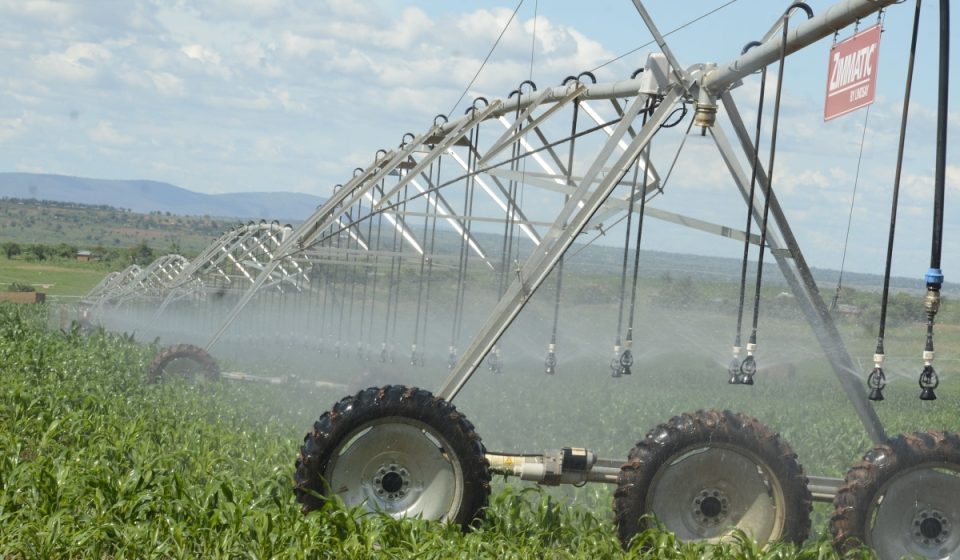Fertilsier use per hectare in Rwanda more than doubled, while irrigated land significantly increased for higher farm output in the government’s seven-year programme of the National Strategy for Transformation (NST1), according to Prime Minister Edouard Ngirente.
The premier made the observation while delivering a presentation on key NST1 achievements at the 19th National Dialogue Council Umushyikirano on Tuesday, January 23.
NST1 runs from 2017 through June 30, 2024.
Ngirente said that in line with food security among Rwandans and having food surplus for the market, the government increased the amount of money meant for farmer subsidy, especially after prices of fertilisers rose at international market – as a result of the Covid-19 pandemic and the Russia Ukraine war impacts.
“We are happy the subsidy helped farmers to increase the quantity of farm input (fertiliser and quality seeds) such that it more than doubled,” he said.
“Fertiliser use stands at 70 kilogrammes per hectare per year, from 32 kilogrammes in 2017,” he indicated.
Rwanda’s progress in terms of fertiliser use is satisfactory because it is above the average of 25 kilogrammes per hectare per year in the Sub-Saharan Africa, the premier pointed out.
However, he said the country still has a long journey ahead because there are countries in order parts of the world that reached 150 kilogrammes of fertilisers per hectare.
“We will continue increasing the amount of feriliser we use because we opened a fertiliser blending plant in Bugesera District, which will help us a lot in this journey,” he observed, reiterating that the plant has a capacity to blend 100,000 tonnes of fertilisers annually, based on soil types and crop nutrient needs in different regions of the country which he said will increase farm productivity.
Meanwhile, he pointed out that the country achieved its 2018 commitment to become self-reliant in seeds, as since 2021, it is no longer importing seeds [for maize, wheat and soybean].
The development, he said, makes the country meet its farmers’ seed needs, and save between Rwf4 and Rwf8 billion that was spent on seed imports before, which it is using to support domestic seed multipliers.
Irrigation progress
Through various major agriculture projects, Ngirente said, irrigated land went up from 48,000 hectares in 2017 to 71,000 hectares currently, representing over 47 per cent increase. He cited Gabiro Agribusiness Hub, Nasho, and Mpanga irrigation schemes among major projects that contributed to such a growth.
Under NST1, Rwanda targets to irrigate more than 102,000 hectares by June 30, 2024.
On measures to build agriculture resilience to climate change, while ensuring a greater agriculture contribution to the country’s economy, the Minister of Agriculture and Animal Resources, Ildephonse Musafiri, said that the ministry plans to implement initiatives including having more irrigated land.
He was speaking during a panel discussion with a topic “Economic Resilience: The potential of traditional and emerging sectors.”
“We cannot produce in case of dry spell [without irrigation]. We have a plan to increase irrigated land by adding at least 20,000 or 30,000 [hectares] to the current 70,000 hectares in the next five years,” Musafiri said.
Currently, Musafiri indicated that more than 78 per cent of Rwandan households are food secure, thanks to government policy and activities meant to increase food production and availability
“Don’t think this rate is small because at the first Umushyikirano that took place in 2006, we were at 28 per cent of households that were food secure… and we hope we will achieve universal food security in few days,” he said.
LenathaMukamana, a farmer from Nyanza District said that farmers were grateful for government subsidy on farm input [fertilisers and seeds], indicating that it was contributing to food production and eliminating hunger.
She added that irrigation was contributing to food production and improved livelihoods for farmers.
Meanwhile, she called for greater irrigation efforts in order to increase farmers’ ability to withstand drought effects in prone areas.
SRC:Newstimes


